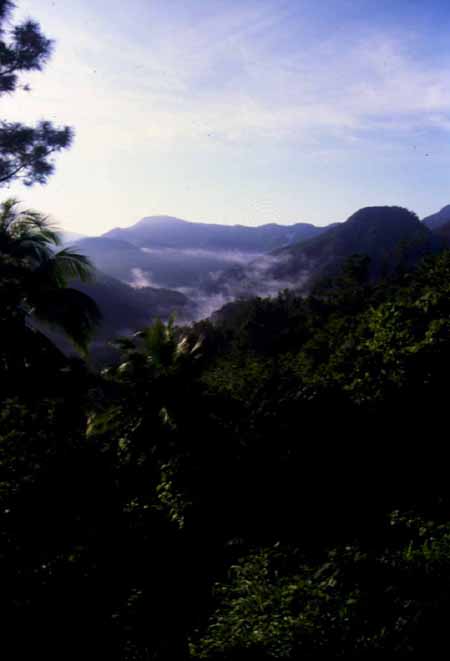
Los Mogotes, Sierra de Galeras © Alfonso Silva Lee
The Cuban Surprise
EXTRACT FROM BOOK
NATURAL CUBA
If I had a time machine, one capable of two-way trips, my first expeditions would be to the period half a millennium back and then to a time 6000 years ago. I wouldn�t bother to transfer the contraption to some other locality. My biggest curiosity is for contemplating Cuba�s nature, living it, at those two moments: the exact arrival of the first Europeans, and earlier�main course�at the landing of the inaugural humans.
These episodes have much greater allure to me than any other earlier or later event, Cuban or foreign. Their appeal is more so than to the placid planet 530 million years back, when Mother Nature was testing the most preposterous designs for aquatic life, most of which are today extinct; or the Jurassic megaproduction, with its surrealish carnival of monumental lizards.
The selections, supposing I were capable of placing the machine at the exact spot of each disembarkment (the first is in eternal dispute; the second, totally unknown), is not to enjoy the newcomers� facial expressions. In the first case, it is for the sight of those aboriginal peoples�the Taínos�immersed in nature, part of her; percipient of even the smallest edible fruit, and of seeds loaded with poison; intimately acquainted with each ridge, creek and ravine; capable of predicting the path of an about-to-flee iguana and the arrival at the beach of a multitude of egg-laden gigantic sea turtles; talented in the art of sniffing oversized storms and at describing their universe with rich, resounding words.
Many Taíno voices have survived. A good part of the island�s toponymy (from Guanahacabibes to Maisí), of the vernacular names of plants and woods (guayacán, majagua, yarey, hicaco, jaimiquí), and of many different animals (jaiba, aguají, cojinúa, iguana, majá, caguayo, manatí, guareao, catey, jutía) have sprung from this almost totally excised culture. Other voices, like huracán, canoa, barbacoa, hamaca, caimán, have anchored themselves forever in today�s transnational Spanish, or have even dispersed, with little change, to other languages, as every reader of this book has just guessed. Both Cuba and Caribe are originally Taíno.

West from Baracoa along La Farola mountain road
© Alfonso Silva Lee

Copyright © 1995-2024 PANGAEA.
All rights reserved.